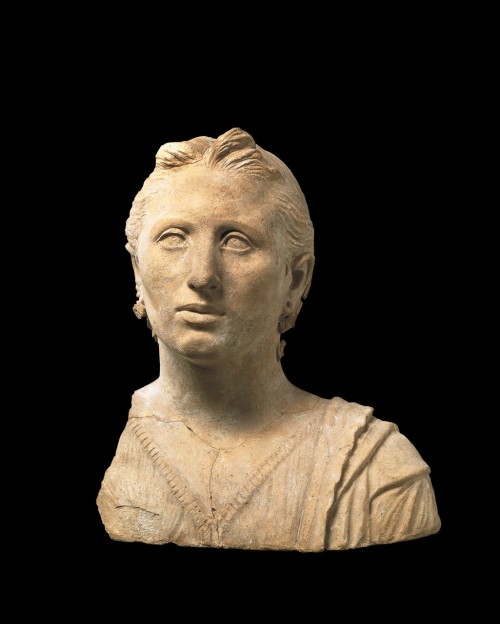#who is she i would like to be her friend
Bust of a woman. Cerveteri, 300 - 250 B.C., terracotta. Gregorian Etruscan Museum.
“The bust is not among the votive terracottas produced in series using moulds, but instead constitutes an original work modelled directly by a capable artist for a high-ranking commission. It depicts a relatively young women with well defined features and is clearly intended as a portrait. The surface of the face and neck is very smooth in order to render the luminosity of the complexion. The lines defined on the neck and below the chin indicate the passing of time on a face that appears to be lost in thought rather than ideally detached. The lion’s-head earrings, which reproduce exemplars in gold found throughout the Etruscan area and in Magna Graecia (around 325 – 200 B.C.) along with the voluminous hair inspired by portraits of Alexander the Great would enable it to be dated from the early Hellenistic period. Mid-Italic portraiture is in part indebted to the formal conquests of Greek art, which during the height of the Hellenistic age developed the first dynastic portraits. Portraiture is a genre that is well attested to in Italic culture, adopted both in the votive and funerary areas, and was subsequently taken up by the Roman aristocracies due to the importance attached to the individual image. The genre passed via Roman art into western figurative culture.” (x)
[id: photo of the terracotta bust described above, which depicts a woman gazing into the distance. end id]
Post link

